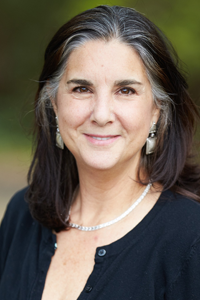Don't see what you're looking for?
Main Site
Berklee.eduCampuses and Schools

Kelly Davidson
Robin Ginenthal
For media inquiries, please contact Media Relations
- Soloist with the Cantata Singers, ALEA III, Extension Works, Merrimack Valley Philharmonic, Brookline Youth Concert Series, Concord Chorus, and Masterworks Chorale
- Appearances with the Opera Company of Boston, Underground Composers, Boston Cecilia Society, and Rules of Air Spontaneous Composition Ensemble
- Lead roles in West Side Story , Il Segreto di Susanna , and Princess and the Pea
- Director, the Pierrot Lunaire Ensemble, performing vocal/instrumental chamber music of the twentieth and twenty-first centuries
- B.M., Philadelphia College of the Performing Arts, opera singing
- M.M., Boston University College of Fine Arts, voice performance
"I think that Berklee is way ahead in terms of how students are learning ear training. When you're learning solfege at most conservatories, there's a system called the fixed do system. If you're in the key of C, C is do (do re mi…). And if you're in the key of F, C is still do. Which means that the relationship of the pitches is going to change all the time according to the key signature. Berklee uses the movable do system. With the movable do system, once students learn the scale, that can be applied to any scale. Once you know how to sing in C major, you know how to sing in F major. Once the students learn the pitch relationships in one key, they can do them in any key."
"We gradually build on that system, with minor scales, with modal scales, with chromatic scales, and if they want to, even beyond that with atonal music and learning to read intervallically. This foundation of the movable do system, I believe, is the best system in the world. I come from a classical background, and even though I was pretty good at the fixed do system, I feel like my reading skills got much better when I started working with the movable do system. It gives the student a frame of reference that comes specifically from notation and is then much easier to apply to more advanced reading."